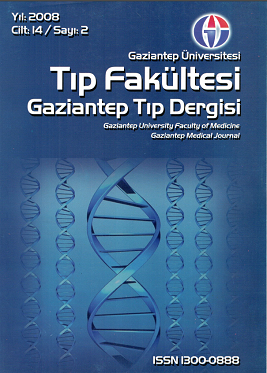Ambulatory Surgery During First Eight Month Applications In Our Clinic
DOI:
https://doi.org/10.58600/eurjther.2008-14-2-1333-archKeywords:
Ambulatory surgery procedure, Anesthesia, ComplicationAbstract
Ambulatory surgery has been increasingly performing in our country. We had discussed our results in our ambulatory surgery clinic during eight months period. All patients underwent ambulatory surgery in our clinic from 4th January 2007 to 31th August 2007 enrolled in this study. Preoperative, peroperative and postoperative results were reviewed retrospectively for all patients. Patients demographic data, departments performed surgery, operations, duration of surgery, ASA classification, anesthesia methods and applied medicines, intra- and postoperative complications, postoperative recovery time from anesthesia, discharge ratio and times were all evaluated.In our outpatient surgery clinic,.since 4th January 2007, 1542 patients had been operated. While %67.83 of all patients were ASA I, %21.27 of all patients were ASA II and %10.24 of all patients were ASA III. The most common operations were excision of mass and biopsy applications. The most frequently used type of anaesthesia was local anesthesia. The most common regional technic was spinal anesthesia. Postoperative mean recovery time from anesthesia was 27.07±13.98minutes. Thanks to advances in surgery and anesthesiology, a lot of anesthesia techniques could be performed safely with proper patient and anesthesiologic techniques selection in ambulatory clinics.
Metrics
References
Burden N. Outpatient Surgery: A View Through History, J Perianesth Nurs. 2005;20:435-437.
Paul F White. Past, present, future in Ambulatory Anesthesia And Surgery. Paul F White (Ed), Ambulatory Anesthesia and Surgery. WB Saunders, London, Great Britain. 1997;3-35.
Jarrett PEM. Day care surgery. EJA. 2001;18;32-35.
Johnson JH. Ambulatory Surgery, JC Rothrock (ed), Perioperative nursing planning Mosby st. Louis, 1996;467- 484.
Litwack, Ambulatory surgery, Post anestehesia care, Second edition Mosby st Louis, 1995:352-374.
Kaye JB, Kaye BL. The economics of office surgical practice. Clin Plast Surg. 1983;10:257-68.
Friedman Z, Chung F, Wong DT. Ambulatory surgery adult patient selection criteria- a survey of Canadian anesthesiologists. Can J Anesth. 2004;51:437-443.
Ansell G L, Montgomery J E, Outcome of ASA III patients undergoing day case surgery. Br J of Anaesth. 2004;92:71-74.
Fysh P. Patient selection, D Hodge (ed) Day Surgery, A Nursing Approach. Churchill Livingstone. 1999:5-25.
Chung F, Mezei G. Adverse outcomes in ambulatory anesthesia; what can we improve? Ambulatory Surgery. 2000;8:73-78.
Postuma R, Ferguson CC, Stanwick RS, Horne JM . Pediatric day-care surgery: a 30-year hospital experience. J Pediatr Surg. 1987;22:304-7.
Sungurtekin H, Sungurtekin U, Ergun E. Local Anesthesia and Midazolam versus Spinal Anesthesia in Ambulatory Pilonidal Surgery. Journal of Clin Anesth. 2003:15:201-205.
Faccenda KA, Finucane BT. Complications of regional anaesthesia. Incidence and prevention. Drug Saf. 2001;24:413- 42.
Urmey WF. Spinal anaesthesia for outpatient surgery. Best Pract Res Clin Anaesth. 2003;17:335-346.
Liu SS, Strodtbeck WM, Richman JM, Wu CL. A Comparison of Regional Versus General Anesthesia for Ambulatory Anesthesia: A Meta-Analysis of Randomized Controlled Trials. Anesth Analg. 2005;101:1634-42.
Gupta A, ,Stierer T, Zuckerman R, Sakima N, Parker SD, Fleisher LA. Comparison of Recovery Profile After Ambulatory Anesthesia with Propofol, Isoflurane, Sevoflurane and Desflurane: A Systematic Review. Anesth Analg. 2004;98:632-41.
Gabriella Bettelli. Which muscle relaxants should be used in day surgery and when. Current Op Anaesth. 2006;19:600-605.
Stevens JB, Wheatley LD. Tracheal Intubation in Ambulatory Surgery Patients: Using Remifentanil and Propofol Without Muscle Relaxants. Anesth Analg. 1998;86:45-9.
Munita Grover, Kevin Haire.Discharge after ambulatory surgery. Current Anaesth Crit Care. 2004:15;331-335.
Downloads
Published
How to Cite
Issue
Section
License
Copyright (c) 2023 European Journal of Therapeutics

This work is licensed under a Creative Commons Attribution-NonCommercial 4.0 International License.
The content of this journal is licensed under a Creative Commons Attribution-NonCommercial 4.0 International License.


















